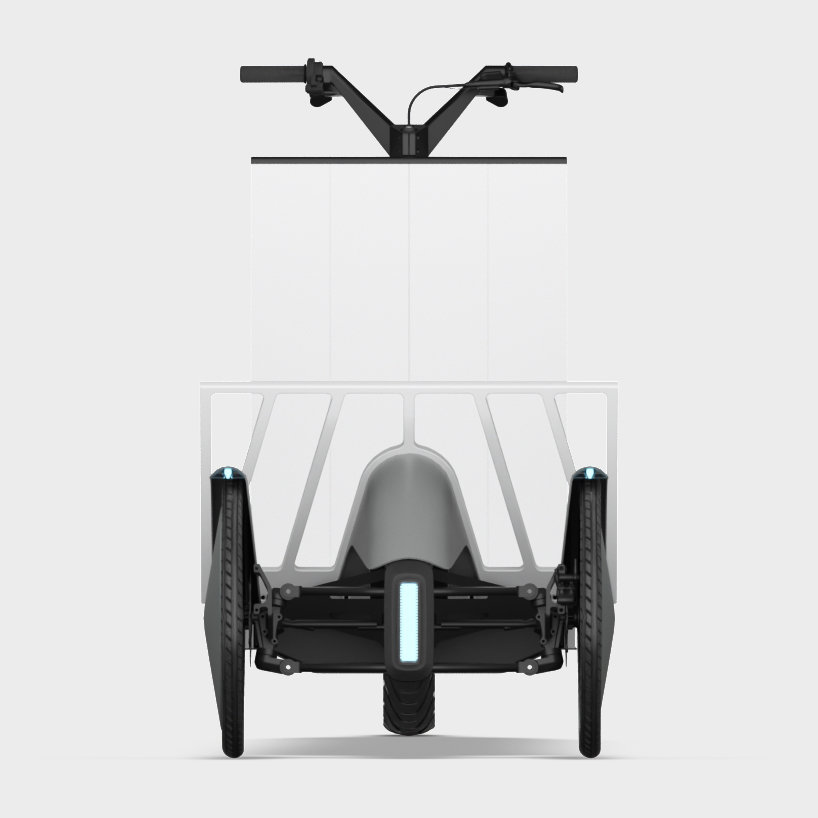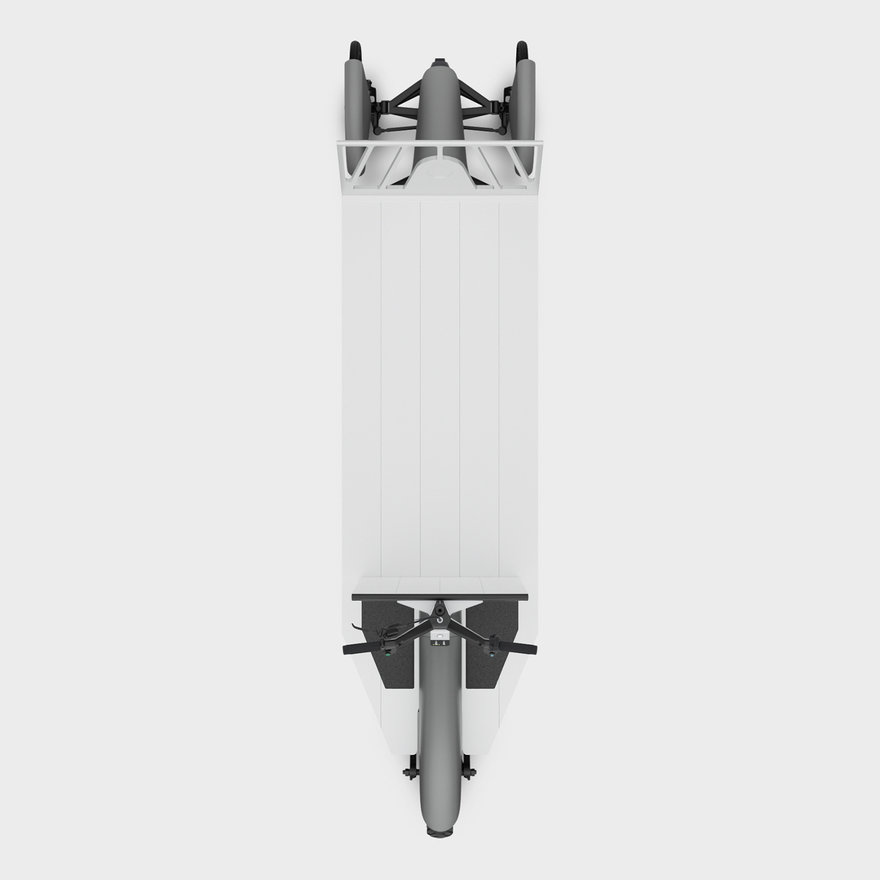Konstantin Grcic and Polestar Rethink the Electric Cargo Bike, Ditch the "Bike" Part
The Re:Move transporter, standing room only
A collaboration between Konstantin Grcic and electric car startup Polestar has yielded a design for a speculative and new type of delivery vehicle. In essence, they looked at an existing form factor, that of the electric cargo bicycle, and seemed to conclude: If it's electric-powered, why do we still need the bicycle part?







The result is this "multi-functional electric transporter concept," which they call "a more sustainable approach for last-mile delivery." There's also more room for packages on it, given the cargo area in relation to the overall footprint. The deliveryperson now stands at the rear of the vehicle, chariot-style. And though the design is envisioned as a replacement for delivery vans, the overall dimensions are still bike-sized:
"The multi-functional electric transporter is only 750 mm wide – perfectly suited to bicycle lanes – and is capable of carrying loads of up to 180 kg.

"The low-carbon aluminium chassis has an electric tilt mechanism, allowing the vehicle to 'lean-in' to turns, improving stability and manoeuvrability, and reducing its turning circle to less than seven metres. Disc brakes instill further dynamic confidence in the EV while a damped rear swing arm is designed for driver comfort and to reduce fatigue. Always-on lighting improves forward visibility for the driver, while brake lights, optional indicators and a horn help to ensure the vehicle is visible to pedestrians and traffic."

Interestingly, the company states that in addition to executing urban package delivery, the concept could bring "cargo transportation to rural areas lacking developed infrastructure." I think that might be a bit optimistic, depending on how rural we're talking. The area I'm in features two-lane roads with no bike lane nor shoulder, and a decent flow of enormous logging trucks that render double-yellow lines a suggestion; I'm not sure drivers of this transporter would be eager to share such roads. And with electric cargo bikes in general, we still haven't seen anyone addressing the issue of inclement weather.
Other collaborators on the project were Swedish electric bike company Cake, who supplied the battery, hub and technology and aluminum producer Hydro, who provided the frame's low-carbon aluminum, which was produced with renewable energy.

"The passion and expertise our partners have brought to this project shows the power of great design," says Thomas Ingenlath, Polestar CEO. "Electrifying vehicles is the start point, not the end game. Our engineers have proven that this kind of open collaboration will accelerate innovation and the shift to truly sustainable mobility."

-
o2Favorite This
-
Q4Comment
K
{Welcome
Create a Core77 Account
Already have an account? Sign In
By creating a Core77 account you confirm that you accept the Terms of Use
K
Reset Password
Please enter your email and we will send an email to reset your password.


Comments
I love it that they boast driver comfort and reduced fatigue, while making them stand for 8 hour shifts on a moving platform where it's difficult to maintain your balance. There's even a perfectly good spot for a seat over the rear fender. Only reason for no seat would be if the driver has to jump off every 30 seconds to drop stuff off, but even then you could integrate a fold-up seat, not to mention there's a tunnel between the driver's feet making stepping off slower.
I would like to see some attempt to address the issue of weather. The operator can be clothed, but nobody wants wet packages. How will the packages be secured and unsecured quickly as the size and shape of the load changes during the delivery route? Also the boxes will never be of uniform size and shape. It might fit better into current shipping logistics if it was the size of a standard pallet.
lol. yes, please drive this giant, electric delivery cart in the bike lane.... that's definitely what it was intended for. May as well let electric Smart cars drive in the bike lane too...
This is closer to a street-going version of the kind of electric cart you see in a warehouse, rather than to a bike. I wonder about making the driver stand rather than supplying a seat, and also note that if you allow powered vehicles into a dedicated bike lane, it ceases to be a bike lane.